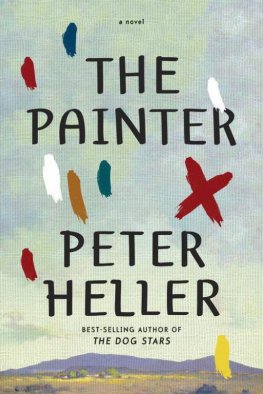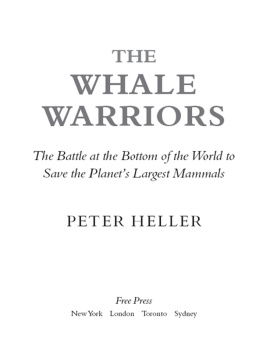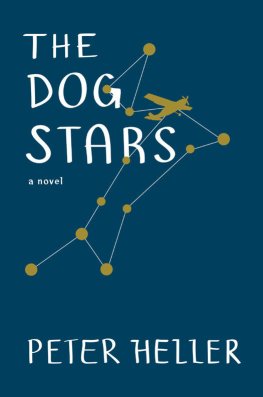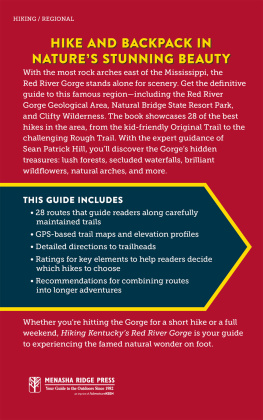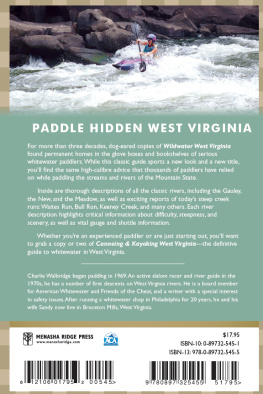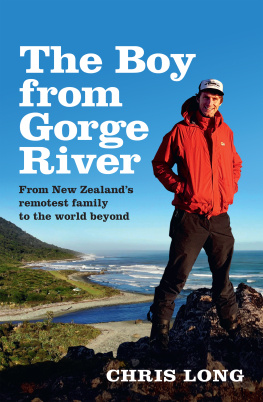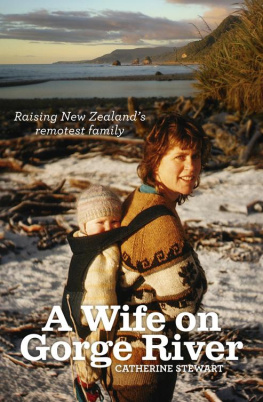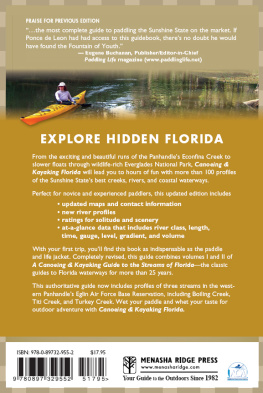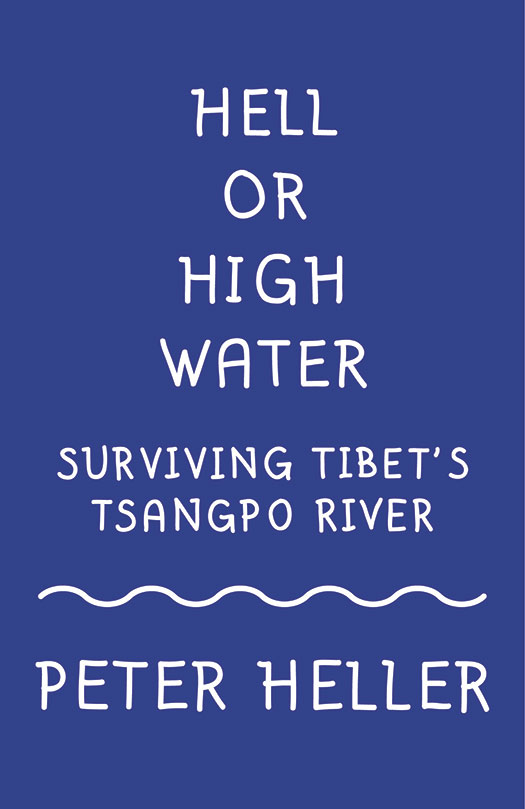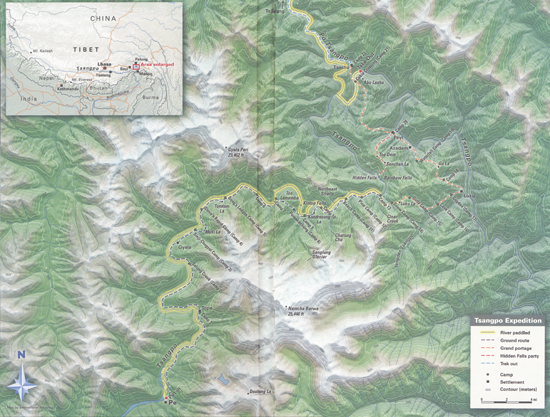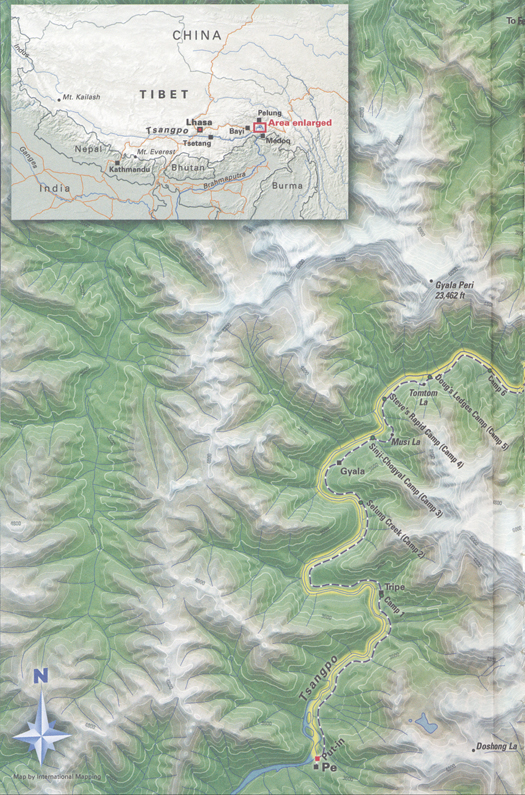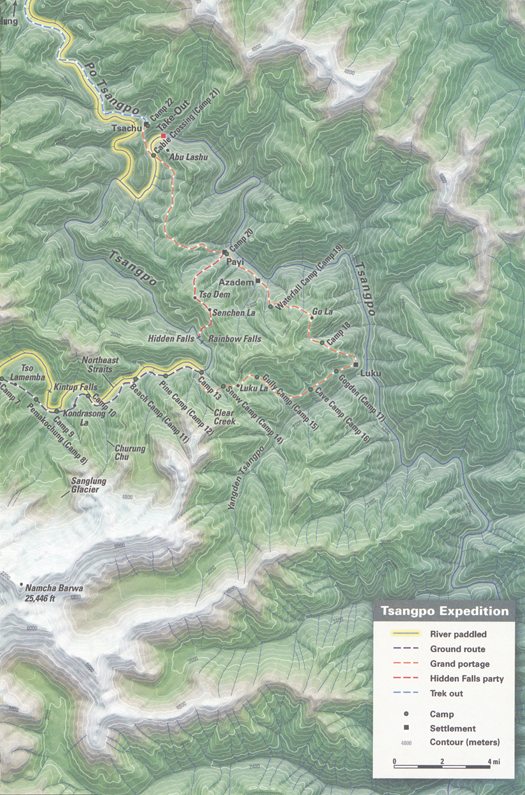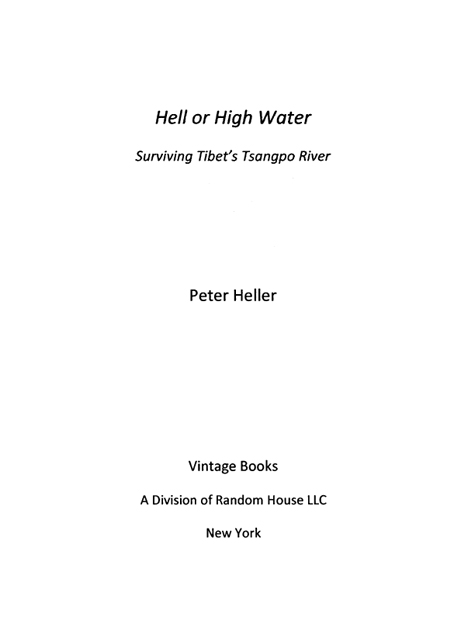FIRST VINTAGE EBOOKS EDITION, APRIL 2014
Copyright 2004 by Peter Heller
All rights reserved. Published in the United States by Vintage Books, a division of Random House LLC, New York. Originally published in hardcover the United States by Rodale Publishers, New York, in 2004.
Vintage and colophon are registered trademarks of Random House LLC.
Vintage eBook ISBN: 978-1-1018-7204-8
www.vintagebooks.com
v3.1
to MY PARENTS
John and Caro
And to MY GRANDMOTHER
Barbara Cheney Watkins
who loved a river story
CONTENTS
ACKNOWLEDGMENTS
Thanks to Gerta Bella, whose encouragement meant so much, and who didnt live to see the completion of this project. And to Kim Yan, who was my rock.
Thanks to Space Imaging and the people thereBob Leitel, Mike Martinez, and especially John McKune Jr.for their emphatic interest and indispensable satellite shots and for many hours spent acquiring images, piecing them together, and laying over them a true lat-long grid. Thanks to Linda Lidov for being the first to bring space imagery to the expedition.
Thanks to Dale Vrabec, scientist and Himalayan historian, who patiently and enthusiastically shared years of unsurpassed research. And to Robbie Barnett at Columbia University and Ganden Thurman at Tibet House. Thanks to Shane Sigle and T. Andrew Earles at Wright Water Engineering.
To my agent, Kathy Robbins, and to Jeremy Katz at Rodale, thanks for being fired up and full of encouragement and insight.
Thanks to Don and Jon at Confluence Kayaks. And to Leslie, Landis, Callie, Sascha, and Lisa for their suggestions and for being great friends and listeners throughout.
Thanks to the folks at Poggios.
Thanks to my magnificent editor, Jay Heinrichs.
And to Hal Espen, who dropped me in and backed me up and whose vision and support never faltered.
May it become the sound of the dharma, the six syllables;
When I am chased by snow, rain, wind and darkness,
May I receive the clear, divine eye of wisdom.
TIBETAN BOOK OF THE DEAD
Did she put on his knowledge with his power
Before the indifferent beak could let her drop?
WILLIAM BUTLER YEATS, LEDA AND THE SWAN
The austere serenity of Shangri-La.
Its forsaken courts and pale pavilions shimmered in repose from which all of the fret of existence had ebbed away, leaving a hush as if moments hardly dared to pass.
JAMES HILTON, LOST HORIZON
PROLOGUE
PUT-IN
The only sound was wind, rippling and snapping the prayer flags that ran down the riverbank and freezing the paddlers hands as they zipped into drysuits. It came from upstream, from flat across the Tibetan Plateau, and it drove dry snowflakes onto the beach and darkened the jade-green water with patterns like woven fabric.
The kayakers moved quickly, pulling on life vests and helmets, and didnt speak. It was already afternoon. After 10 years of planning, there wasnt much to say. They were seven of the best expeditionary paddlers in the world, from four countries, led by Scott Lindgren of Auburn, California. They had come to Tibet to paddle the Tsangpo Gorge, arguably the last great adventure prize left on Earth. It is a Himalayan chasm so shrouded in mystery and danger that a legendary waterfall in its depths, sought by explorers for more than a century, had never been photographed until late in the 20th century. And it is a place, like Everest, that shimmers with myth and menacing superlatives.
The Yarlung Tsangpo, the Purifier, is one of four major rivers that flow off the slopes of Mount Kailash in western Tibet, a mountain that is holy to Buddhists and Hindus. The river runs at great volume due east for almost a thousand miles, paralleling the Himalayas and draining the runoff from their entire north slope, and then abruptly bends south, plunging through the barrier of mountains to emerge, flat and stately, in the jungles of Assam, India. In its hidden course through the mountains, the river and its tributaries carve the Tsangpo Gorge. Just before the main current sweeps around the Great Bend, it is joined by the Po Tsangpo flowing in from the north. From there, the Yarlung Tsangpo crashes through its Lower Gorge, which also has never been run, on its way to the Indian border, about 80 miles away.
For centuries, the Gorge has lived in legend as the site of fabled waterfalls and magic portals to other worlds. It was the inspiration for Shangri-La in James Hiltons novel Lost Horizon, and in Tibetan Buddhist mythology, it cradles the most sacred landscapePemako, a beyul, or Hidden Land, a place of transformative power and refuge. A ruined monastery called Pemakochung is one of the holiest pilgrimage sites for Tibetan Buddhists seeking enlightenment. An ancient Buddhist text unearthed by a lama in the 17th century declares, Just taking seven steps toward Pemako with pure intention, one will certainly be reborn here. A single drop of water from this sacred placewhoever tastes itwill be freed from rebirth in the lower realms of existence. Tibetan Buddhists believe that the Gorge is the home of the goddess Dorje Pagmo, the Diamond Sow, Buddhas consort and a symbol of enlightenment. The Gorge is her body, the highest peaks her breasts, and the river her spine. Two tribes live there, the only Buddhist hunting cultures on Earth. They have little conception of a greater Tibet.
The Tsangpo cuts beneath the perpetual snows of 25,000-foot peaks, running so far below them that much of the canyon is subtropical. Snow leopards and rare mountain tigers hunt the higher slopes, which are covered in bamboo and flowering rhododendron, while farther down the canyon, the forest turns to jungle and reverberates with the cries of tropical birds. Bengal tigers, some of the largest ever seen, haunt the Lower Gorge.
Measuring from the tops of the peaks that define it, the Tsangpo is the deepest river gorge in the world, three times deeper and eight times steeper than the Grand Canyon. (In places, the river falls even faster: Imagine taking the Grand Canyon stretch of the Colorado River, with its two-story waves and churning currents, and tilting it to more than 15 times its actual steepness.) Along its course, the Tsangpo cascades over the famed Rainbow Falls, the Lost Falls of the Brahmaputra, and the Hidden Falls of Dorje Pagmo. (Hidden Falls wasnt documented until 1998, in a controversial race of discoveryclaimed by both Himalayan explorer Ian Baker and a team of Chinese scientists.) One stretch of river called the Lost Five Miles is said to thunder through 60 to 70 cataracts, each 10 feet high, in rapid succession.
In an age diminished by the belief that there is no magnificent adventure left undone, the Tsangpo Gorge remained a fearsome anomaly. Nobody had ever successfully paddled the 44-mile stretch of the Upper Gorge from the town of Pe to Clear Creek, beyond which high waterfalls make the Gorge impassable. No human being had ever traversed the length of it at river level. A section of the Gorge, despite numerous assaults, had never even been seen by a Westerner.


